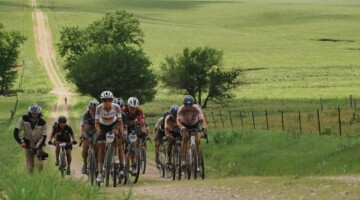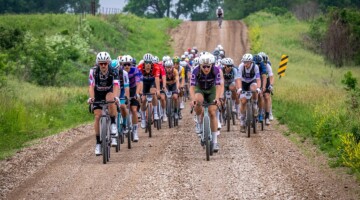Ever wondered what it would look like if a professional cyclist put on a bike race? Well, Utah’s annual Crusher in the Tushar gravel race is one example of what might transpire.
First held in 2011, the Crusher in the Tushar was founded by former road professional Burke Swindlehurst because hey, putting on a bike race is way more fun than getting a real post-retirement job.
“I had this idea of an event for years, and when I quit racing professionally in 2010, I was like, ‘Now what? What am I going to do?’ I decided I would put on that race I’ve always dreamed about and see what happens,” Swindlehurst recalled.
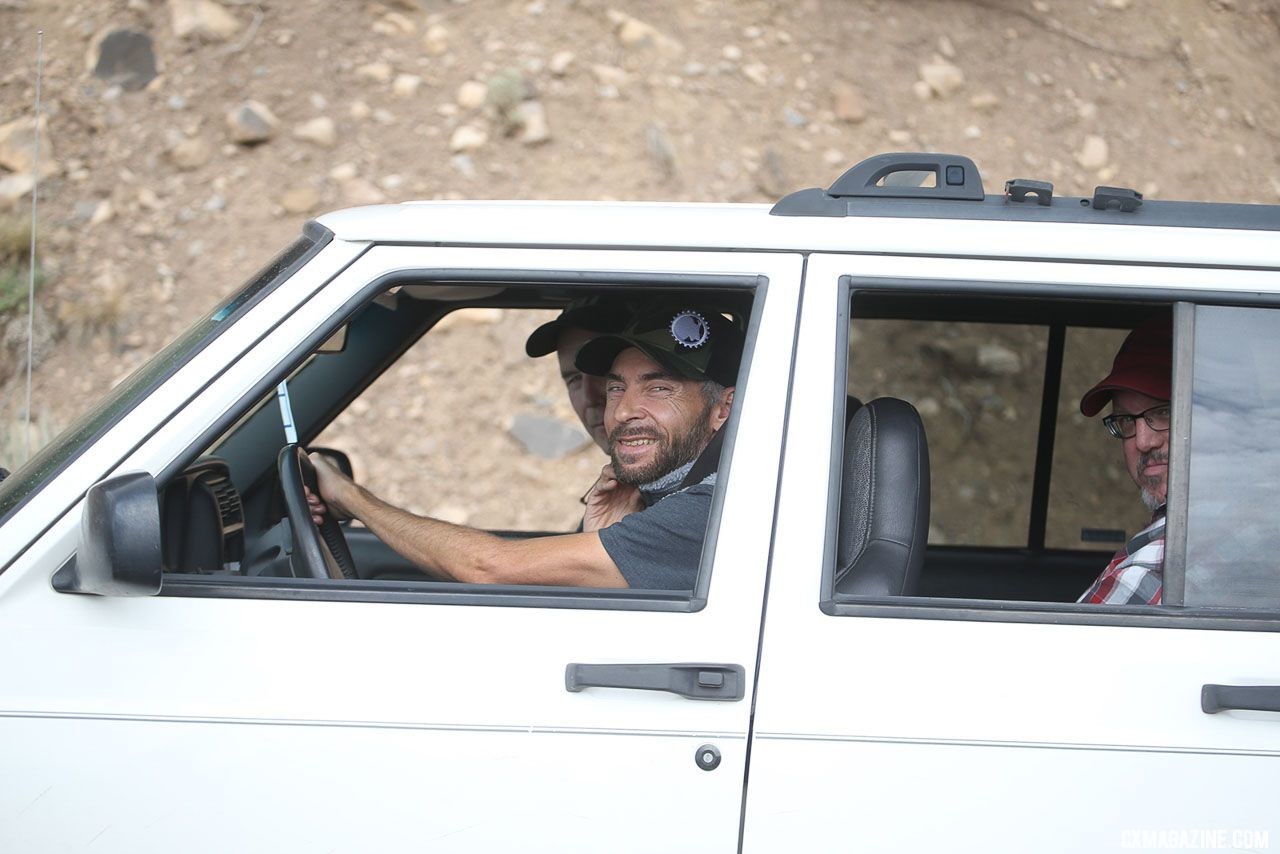
Former road pro Burke Swindlehurst is the driving force behind the Crusher in the Tushar. © Cathy Fegan-Kim
Obviously, since we are here writing about the Crusher, Swindlehurst’s post-retirement dream was one that came true.
But to say the event has been a success is a bit of an understatement. The first Crusher drew 130 riders, and since then, every single edition has sold out. On Saturday, the 2019 field of 600 riders descends on Beaver, Utah for the chance to crush gravel and maybe a bit of themselves in the Tushar Mountains.
The route those riders take will be one the event found and race director knows well. If they’re lucky, it will have the same good vibes for them, it did for Swindlehurst.
“The idea came from a ride I did way back in like 1996 when I was preparing for the Tour of the Gila,” Swindlehurst said. “I wanted to get in some big climbs with a lot of elevation change at high altitude, but I was living in Northern Utah going to school in Logan. That area didn’t have the really big climbs I wanted, so I took a trip down to Beaver where I grew up, and since I knew all the roads there, I basically came up with the route that is the Crusher loop we use today.”
There was something special about the Crusher loop. Swindlehurst went on to win that edition of the Tour of the Gila, a result that helped open doors for him in the sport.
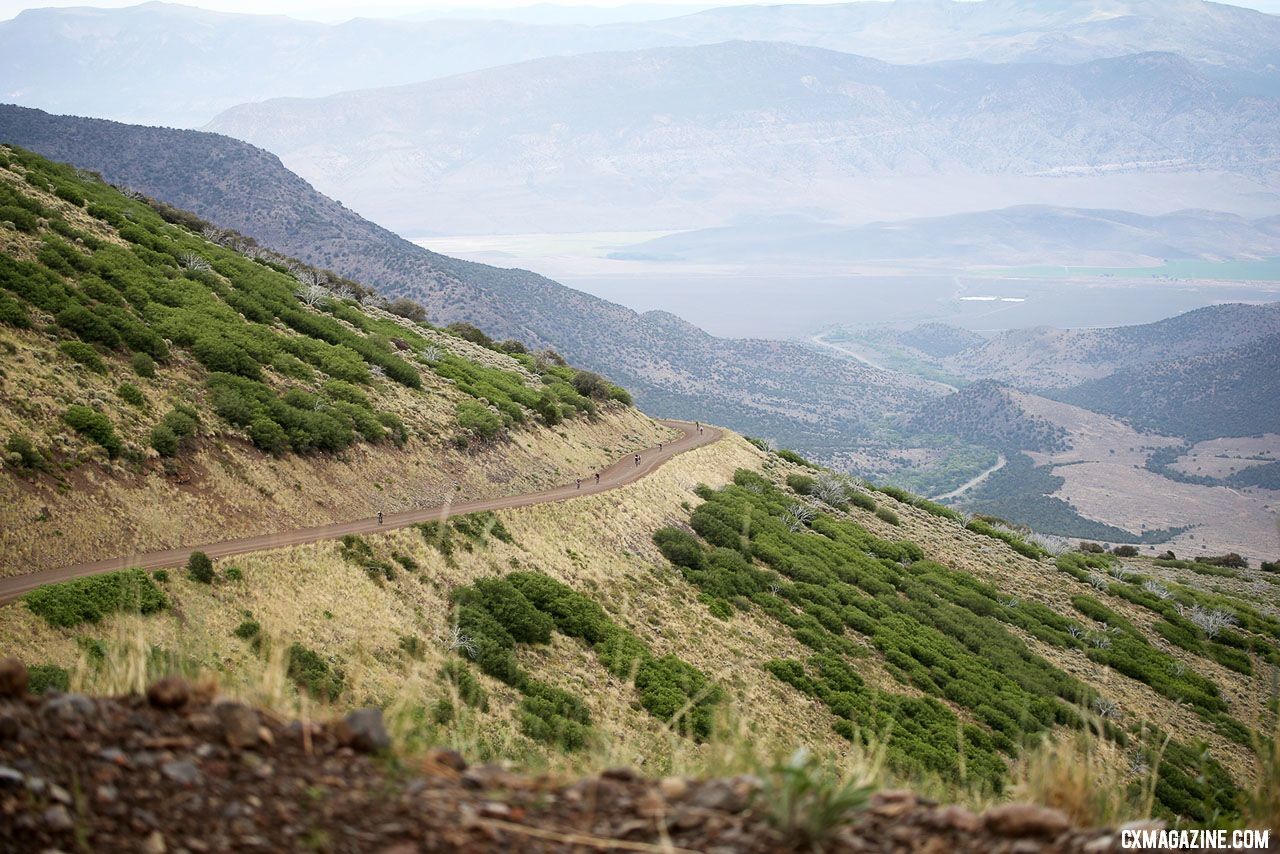
What was once a training route became the Crusher in the Tushar. 2018 Crusher in the Tushar. © Cathy Fegan-Kim
Another race, the three-day Boulder-to-Breckenridge stage race, helped keep the idea of a mixed-terrain race alive in Swindlehurst’s head. That race featured segments on mountain pass dirt roads and even allowed riders to switch to a mountain bike for the gnarliest spots.
When it came time to start the Crusher, the vision of what it would be had taken its mature shape.
“My thinking when I was dreaming up the Crusher was I liked the format of mixing pavement and dirt, but I think the bike change thing was not that attractive,” Swindlehurst said. “I figured I would do a race that covers the same kind of terrain, but you have to be on one bike the whole time.”
Evolution of the Crusher
While we have seen examples of big-time gravel races changing it up this year, the Crusher has kept its route largely the same over the years. This Saturday, the race starts in Beaver as it always has before heading up and over the Tushar Mountains before climbing up to the mountain-top finish at the Eagle Point Resort.
The highlight of the race is the famed Col d’ Crush, which is the second dirt road climb up to the Eagle Point Resort. The Col d’ Crush KOM is located at Mile 56, and unfortunately for riders, there is still another good 1,000 feet of climbing to go after the KOM before they reach the finish.
The route starts at 6,000 feet and finishes above 10,000 feet of elevation, all the while packing over 10,000 total feet of climbing into the race’s 69 miles. Wondering how hard the Crusher is? Both Josh Berry and Alison Tetrick picked it as the most challenging gravel race they have ever done in our Gravel Superlatives Ask the Pros.
In a gravel world where the roads less traveled are constantly changing, Swindlehurst is sanguine about the decision to keep the Crusher route the same.
“Let’s be honest, of the 600 people we have registered, maybe 10% of those people have legitimate aspirations of getting a podium placing,” he said. “The rest of the people are out there testing themselves. When you have the same course, it allows people to compare their performances to each other from year to year. They might say, my goal is to take 5 minutes off my time this year.”
He continued, “I think that’s one of the draws for people. From year to year, they can take a different approach to their training or their nutrition or whatever it happens to be and see how that pans out on the road.”
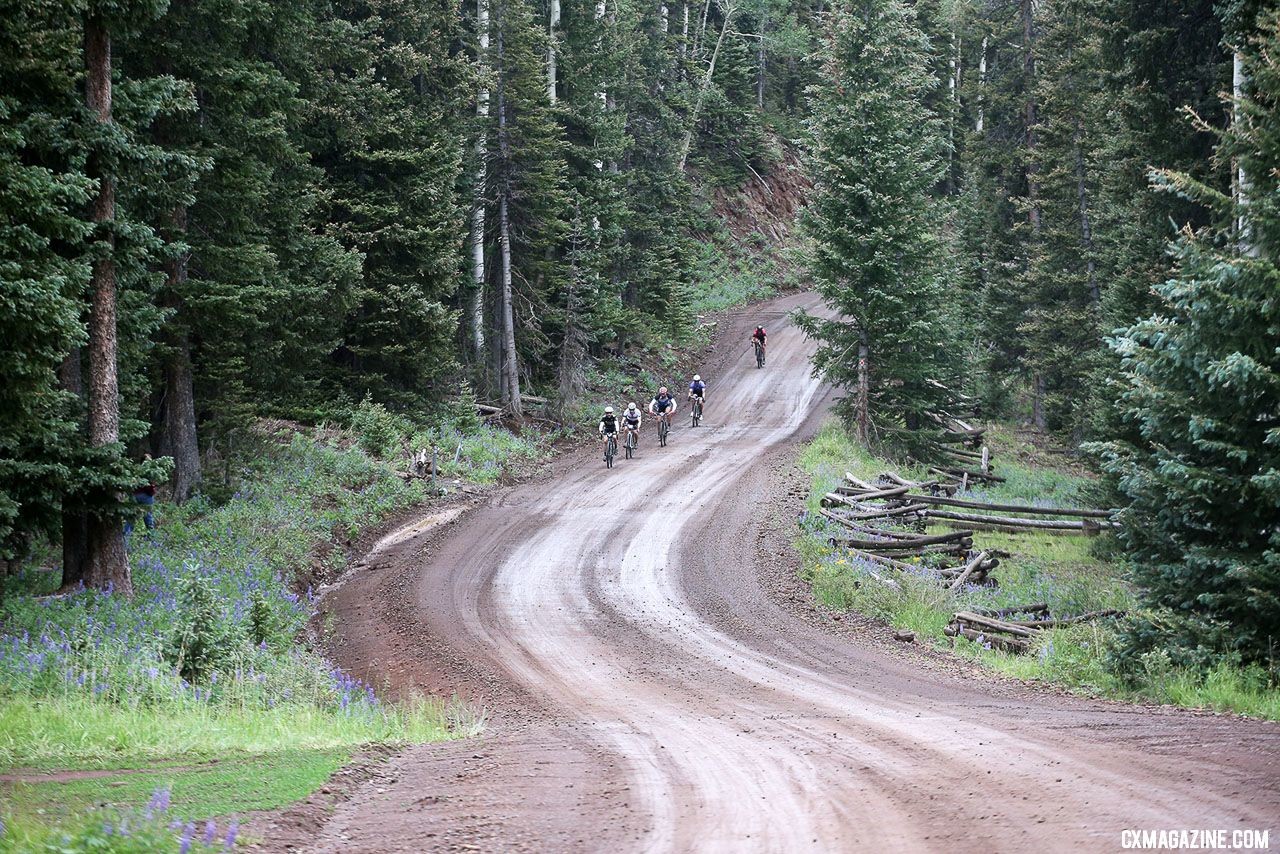
With the route the same each year, riders can push themselves and take on what Mother Nature has to dish out. 2018 Crusher in the Tushar. © Cathy Fegan-Kim
In professional road racing, things are done a certain way, and one could likely forgive the pro-turned-race-director if he insisted that things need to be done a certain way. However, for Swindlehurst, that is really not the case.
“Another thing I really enjoy about the race is instead me trying to curate the race and the experience, I think it’s fun to just let the participants be the ones who decide what the experience is going to be like and let it evolve that way,” he said.
One aspect of the organic nature of the Crusher experience Swindlehurst pointed to was the “Crushstache” contest that takes place during each race. “A number of guys early on in the race were talking about growing the best Crushstache, so now we have guys who grow these ridiculous mustaches, and we usually have prizes for the best ones,” he said with a smile.
Crushstache time is upon us #crushstache2019 pic.twitter.com/yFJgtDjQ0P
— The Crusher (@tusharcrusher) June 27, 2019
While the Crusher route has remained largely unchanged throughout the race history, bike choices among the participants have marked the continuing evolution of the gravel discipline.
When Swindlehurst first did his training in the Tushar Mountains in 1996, he did it the old-school way. “The first time I rode it in 1996, I was on a road bike with 23c tires and a 39-tooth chain ring and a 25t cog in the back. Obviously not the right equipment for the course,” he laughed.
By the time the first Crusher took place in 2011, a lot had changed on the mixed-terrain bike scene. Disc brakes were slowly making their way to drop bar bikes and early tubeless technology was also becoming a thing. Bike choice was such a thing at that first event, the race has a “Which Bike?” section to help you choose between mountain bike and cyclocross bike.
Dedicated gravel bikes have obviously flattened out the bike choice decision, but with a sentiment likely shared by many OG Tushar crushers, Swindlehurst looks back fondly on those early days.
“There were a number of what I call ‘Frankenbikes,'” he said. “People who had just kind of pieced together bits and pieces of a mountain bike and ’cross bike or whatever. People were riding 29-inch wheels with drop bars and that kind of thing. Looking back, those first few years were a super fun time because everything was so fun and exciting.”
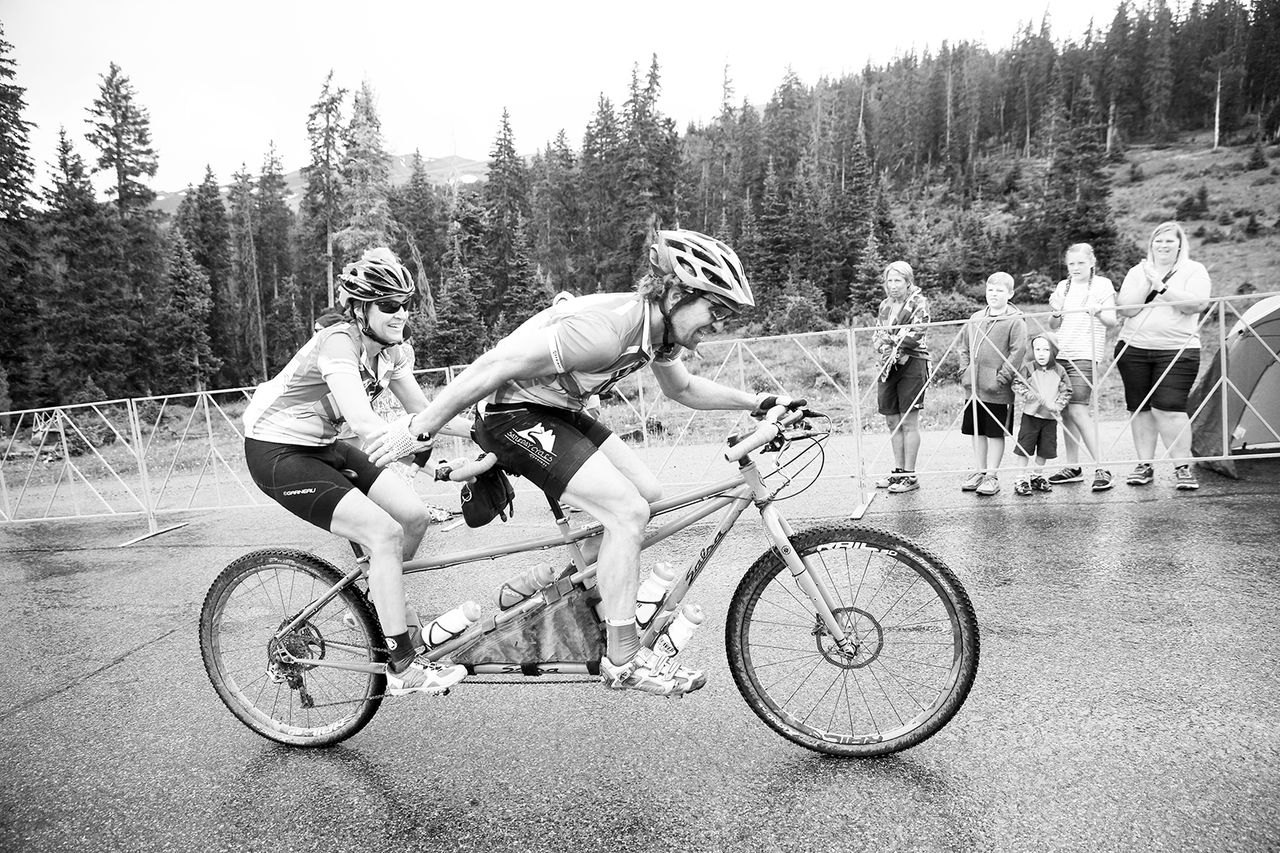
The Crusher has a “Wild West” approach to bike requirements. 2017 Crusher in the Tushar © C. Fegan-Kim
What Works
When Swindlehurst started the Crusher in the Tushar, he was just a former pro road racer with a dream of putting on a cool bike race. Although the race’s success seems kind of inevitable in retrospect—beautiful, challenging course, participant-focused vibe, discipline of cycling on the verge of explosive growth—there was no guarantee of that in 2011.
“If I could look into a crystal ball and see what not just this race has become, but what has happened in gravel in such a short amount of time, I wouldn’t have believed it. It’s still kind of hard to believe what’s going on,” Swindlehurst.
Coming from a racing background where winning is everything, there is no doubt the experience of watching all the finishers at the first Crusher make it to the mountain-top finish helped shaped his understanding of what the event could be.
“I cried when I saw the very last person come across the finish line [in 2011],” Swindlehurst remembered. “That brought tears to my eyes because the guy was out on the course for 9 hours. It was a long day, and I’m sure he had to walk up some hills. I’m pretty sure he was on a fat bike. I kind of heard about his back story dealing with some health issues, and the Crusher was how he was motivating himself to hang onto his health. When he crossed the line, I kind of lost it.”
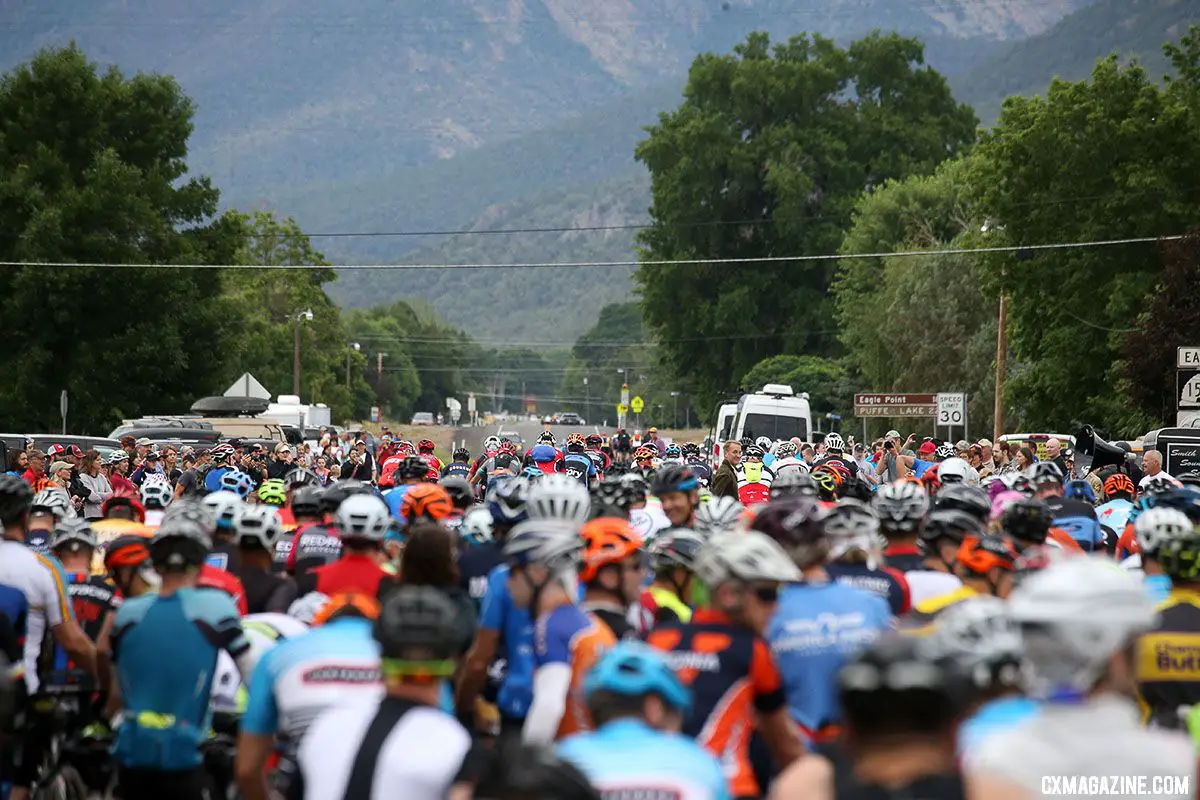
The experiences of all riders are important to the event’s success. 2018 Crusher in the Tushar. © Cathy Fegan-Kim
Like every gravel race, the experience of every participant at the Crusher is important to the event’s success. However, there is at least one way Swindlehurst lets his professional experience shine through.
Since its inception, the Crusher has offered payouts to the top Open Women and Open Men finishers. The payouts are equal, with a top prize of $1,000 going to the top finishers for each gender. There are also $250 prizes for the first to the Col d’ Crush KOM line.
“Having been a racer myself, when you go to events, I know you’re usually just scraping by, so any bit of cash you can get helps,” Swindlehurst said. “I kind of wanted to pay it forward to this generation of rider, because I know it helped me a lot when I was racing.”
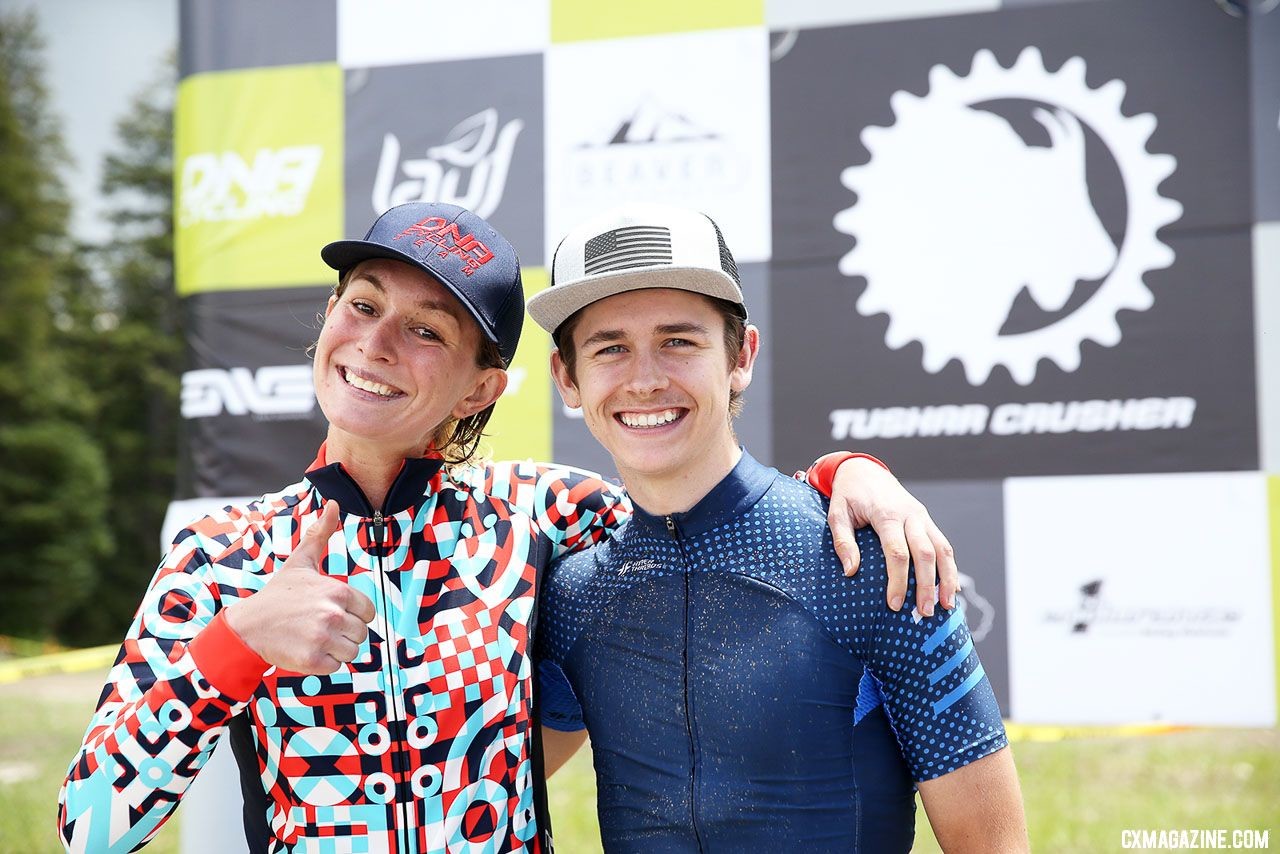
2018 winners Lauren De Crescenzo and Zach Calton took home nice checks. 2018 Crusher in the Tushar. © Cathy Fegan-Kim
Although the event downplays the payouts, the combination of the prize and the challenge has drawn increasingly impressive fields for the event. Last year, however, there were two registrants who turned Swindlehurst into a bit of a fanboy.
“The very last transfer to come in last year was from Ned Overend, and I like lost it,” he said. “I called my wife and was like, ‘You’ll never guess what happened!’ She was concerned and said, ‘Oh no, what happened?’ ‘Ned Overend just bought the last entry!’ It was like the coolest thing ever to have Ned show up.”
“Then we had Rebecca Rusch last year too. I have a photo of those two at the finish line, and that’s definitely one of my proudest moments as an event promoter to have two legends like them come race and see smiles on their faces. That’s what keeps you going.”
Thus far, this story has focused quite a bit on Swindlehurst and his shepherding of the Crusher in the Tushar into Year 9. That is because by-and-large, Swindlehurst is the impetus behind much of what happens with the event. He gets some help from his wife and a small group of volunteers, but at the end of the day, he is course designer, race director, press secretary and sponsor relations director, all wrapped into one.
So how has he made it work so well for so long? The event’s success has totally taken me by surprise,” he initially responded.
After a few seconds, he offered this, “I basically jumped into this thing with both feet not really knowing what I was doing. I think that maybe I didn’t have an education in events might have played a role in our success. I’ve relied on my gut instincts on a lot of things like course design, looking at it from a racer’s perspective. Taking it from the ground up instead of like a race operations person who doesn’t have as much experience riding bikes.”
Whatever it is about the director and the race, together, it all works. On Saturday, the Tushar Mountains will be calling for riders to challenge themselves, enjoy a beautiful route and probably get crushed just a little bit in the process.
Featured image: Cathy Fegan-Kim

























